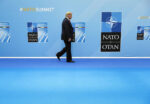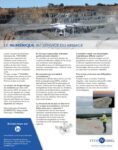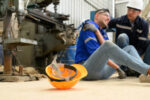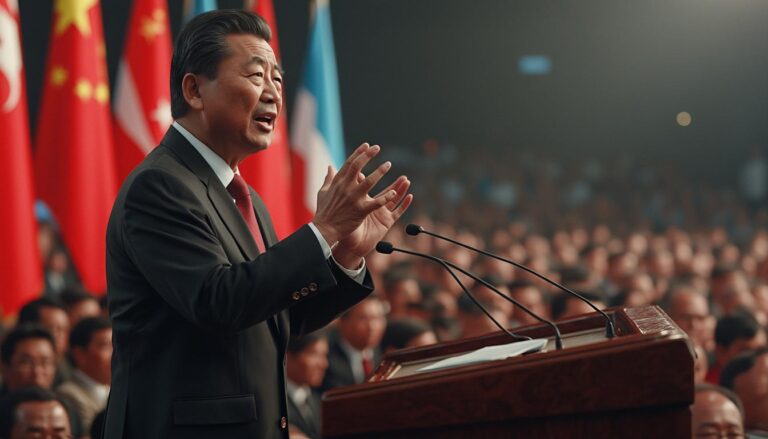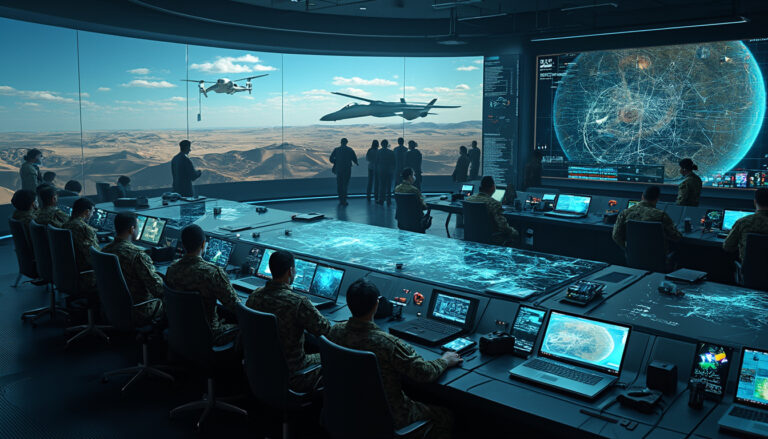The development of military technology represents a critical issue for a nation’s sovereignty. The ability to innovate in defense systems, particularly through research in artificial intelligence and unmanned aerial systems, redefines global power balances. In the face of constantly evolving threats, technical advancements become an essential vector of security.
The recent statements from a high-ranking Iranian military official have highlighted the sophistication of internally developed defense technologies. Brigadier General Mohammad Mehdinejad Nouri praised the progress made by the armed forces in the strategic fields of unmanned aerial systems and artificial intelligence. According to him, these innovations strengthen national power and pave the way for fruitful partnerships with academic institutions and innovative companies. Furthermore, the dynamic collaboration between the military and innovative companies is crucial for optimizing technological capabilities. With a clear intention to avoid dependence and vulnerability, the integration of advanced technologies such as microelectronics and digital systems is imperative to counter new forms of threats.

Table des matières
ToggleThe Iranian armed forces are developing defense technology of unprecedented complexity
Advancements in defense technology within the Iranian armed forces have attracted attention both on the national and international stages. A prominent military official, Brigadier General Mohammad Mehdinejad Nouri, recently shed light on significant progress made in the field of defense technologies, particularly through unmanned aerial systems. This development, arising from indigenous initiatives, not only enhances the Iranian arsenal but also its geopolitical position.
As early as 1985, Iran began its journey in unmanned aerial systems (UAS), a move that has gradually transformed the country into an exporter of advanced technologies. General Nouri emphasizes that the ability to expand the military arsenal while integrating cutting-edge technologies demonstrates a well-thought-out strategy. Substantial investments in research and development, along with increased cooperation with academic and technological institutions, are crucial for such an evolution.
In this dynamic, the growing importance of artificial intelligence (AI) emerges as a central strategic axis. By integrating AI into its new technologies, Iran strengthens its military power by equipping itself with tools capable of addressing contemporary challenges. The shift towards a more autonomous and optimized defense cannot be ignored, as these technologies offer faster and more precise reaction capabilities in the face of threats.
How artificial intelligence is transforming Iranian defense
General Nouri categorized AI among the critical technologies of current defense, essential for establishing effective military strategies. AI not only enables rapid data analysis but also better anticipates potential threats. The applications of these systems, combined with the capabilities of UAS, ensure that the Iranian armed forces benefit from an increasingly sophisticated technological platform.
Indeed, AI plays a key role in synchronizing weapons systems, enabling interoperability between various military platforms. By leveraging AI, Iran aims to create a coherent network of information, integrating diverse technologies, from surveillance systems to weaponry devices. This technological ecosystem aims to enhance the national response to internal and external security challenges.
It is important to highlight that these advancements are not limited exclusively to military applications. AI also fosters the development of tools that can be used in civilian areas, such as crisis management or cybersecurity. Thus, the research and innovations made in defense also have a positive impact on various sectors of the Iranian economy.
What are the geopolitical implications of this advancement?
As Iran refines its defense technologies, the geopolitical implications become undeniable. The expanded military-technical arsenal strengthens Tehran’s influence in the Middle East while raising concerns among neighboring countries and major powers. Such a shift from an import state to an export state of technologies is likely to redefine the regional balance of power.
New capabilities, such as the support from potentially exportable drones, could result in a net change in the military dynamics of neighboring countries. The possibility for Iran to provide these technologies to allied nations could strengthen strategic coalitions. However, this also brings risks of reprisals and increased tensions, particularly regarding the responses from the United States and other powers on the global stage.
Another crucial aspect lies in Iran’s commitment to work with strategic partners to advance these technologies. Collaboration between the armed forces and universities, as well as innovative companies, becomes essential in pursuit of enhanced competitiveness. These synergies contribute to strengthening local expertise and developing products that are both competitive and suited to military needs.
How is cooperation between the military and the private sector proceeding?
The dynamic between the military sector and technology-focused companies is particularly promising. Over the past few decades, Iran has heavily invested in partnerships with academic institutions and innovative companies. They play a fundamental role in developing new technologies and aligning defense initiatives with the country’s needs.
This synergy produces creative ideas and innovative solutions, thereby enhancing not only defensive capabilities but also the overall performance of the Iranian technology sector. For example, joint innovation projects have led to the emergence of quick solutions tailored to contemporary defense challenges while ensuring continuous training and development for specialists.
Collaborations also extend to advanced research programs focused on sensitive themes such as microelectronics, quantum sciences, and digital systems. These initiatives result in the establishment of joint research laboratories, contributing to a synergistic and stimulating ecosystem for startups and entrepreneurial initiatives in Iran.
What challenges does Iran face in its technological advancements?
Despite notable advancements, Iran faces several challenges in its military technological development. International pressure and economic sanctions complicate access to certain high-end resources and technologies. Therefore, Iran must increasingly turn to its own innovation capabilities to overcome these obstacles.
Investing in internal solutions becomes crucial. While resources are sometimes limited, the Iranian armed forces must demonstrate creativity and determination while relying on collaborations with local high-tech companies. Addressing the diversity of threats prepares the country for varied challenges, making the development of new technologies not just a priority but also a strategic necessity.
Moreover, focusing on human resource training becomes essential. Developing a skilled workforce capable of designing, deploying, and maintaining these complex systems is crucial for sustaining the advancements made. Education and training programs must therefore raise their standards to meet international benchmarks.
In summary, the desire to be a key player on the global stage dictates the necessity to overcome these obstacles. The pursuit of excellence in innovation and defense technology thus emerges as the true cornerstone of national strategy.





